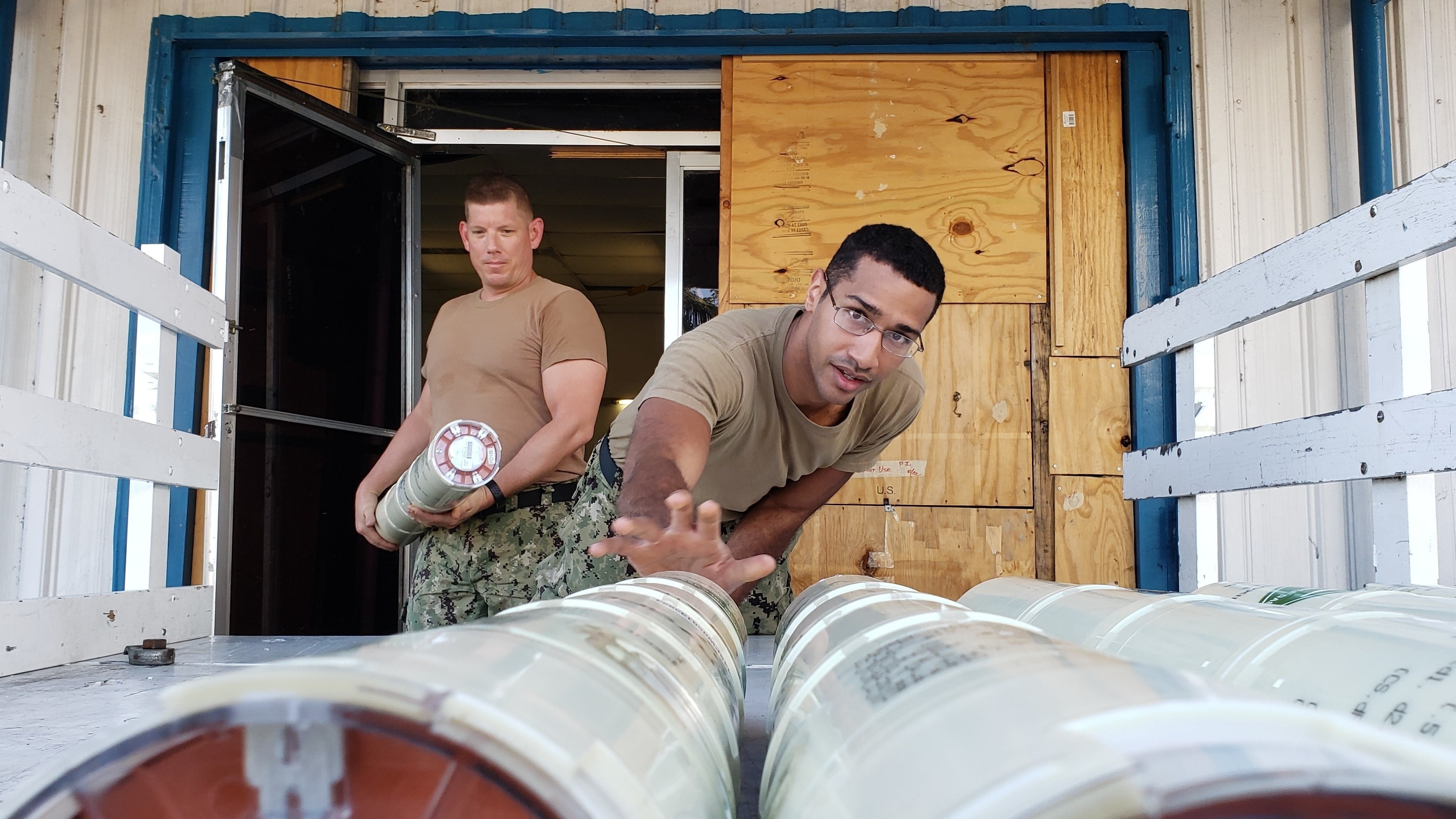WASHINGTON — A new technology platform introduced by ManTech on May 6 will allow war fighters in austere environments to access real-time intelligence, according to company executives.
The announcement comes as the Pentagon equips soldiers and sailors with additional sensors and devices that generate more data, which in turn can be uploaded to the cloud to provide leaders with a clearer picture of what’s happening on the battlefield.
To handle that flood of information, the Department of Defense has invested in its IT infrastructure and plans to heavily rely on cloud computing in future conflicts. But the department is also exploring the possibilities of a new IT architecture, sometimes dubbed “fog computing.”
Click here for more stories, videos and interviews from Sea-Air-Space!
The fog saves and caches data from sensors and devices on battlefields where bandwidth is limited or constrained, but only sends essential information to the cloud to minimize resources and increase security. Then, when a connection is more stable, it passes the full complement of data to the cloud. This approach allows commanders to prioritize how available bandwidth is used, and it lets them choose when to send larger batches of information.
Such technology could be central to the Navy as it seeks to master net-centric warfare.
“We have a lot of sensitive data at the edge. We collect a lot of data … our war fighters have very limited capability to process that data,” Srini Iyer, chief technology officer of Mission Solutions & Services Group at ManTech, told C4ISRNET, a sister publication of Defense News and Navy Times. “They’re not able to respond in a very timely manner.”
Fog computing and its technological siblings — often referred to edge computing, the tactical cloud or the battlefield cloud — offer new layers of computing power that act as a kind of exclamation point on the Pentagon’s digital transformation. The office of the Pentagon’s chief information office is expected to award a multibillion cloud computing contract, known as JEDI, later this year.
ManTech leaders describe its Secure Tactical Edge Platform, or STEP, as a “cloud in a box” that will allow forces to collect, store, compute and analyze intelligence in real time for faster decision-making. Moreover, the system is small and portable, fitting into a carry-on sized case.
Iyer said for forces deployed at the tactical edge to have real time data, they must have a capability available that can process it in real time. “My rough rule of thumb is if you can get to act on 95 percent of the data you receive, that’s a huge win,” he said.
RELATED

Representatives from technology giant Cisco have also advocated for the use of fog computing for defense agencies, arguing it allows commanders to locally manipulate data and then connect to enterprise and cloud repositories for further analytics.
Cindy DeCarlo, director of U.S. federal business development at Cisco, said the fog is best used for situations where activity is most demanding and communication is most challenged. In addition, in January, the Army Research Laboratory awarded Technica Corp., a Dulles, Virginia-based technology company, a $1 million contract to support its Distributed Processing in Heterogeneous Tactical Environment program.
Industry officials say one of the first examples of edge computing is in live, virtual and constructing training environments. That approach requires links to space, cyber, data links, radar, sensors, ranges, models, and simulations across robust networks.
“Fog computing is an emerging computing paradigm that brings compute, storage, networking, acceleration, analytics, and management control closer to the network edge,” according to a Technica whitepaper. “The name comes from the fact that while the cloud is high in the air, the fog is closer to the ground. The key aspect of fog computing is the inclusion of a fog layer between the cloud (or enterprise servers in the core) and [internet of things] devices.”
ManTech’s product for this space incorporates a feature known as the zero-trust model; Iyer said the premise here is to trust no one inside or outside the network. Users must go through authentication to ensure they are cleared to view sensitive information before being able to access resources. For example, Iyer said, a financial employee should not have access to operational information.
Iyer said the U.S. military has expressed interest in STEP, but added that the company has not yet used the product in a war-fighting scenario.
Mark Pomerleau is a reporter for C4ISRNET, covering information warfare and cyberspace.
Mike Gruss served as the editor-in-chief of Sightline Media Group's stable of news outlets, which includes Army Times, Air Force Times, C4ISRNET, Defense News, Federal Times, Marine Corps, Military Times and Navy Times.








